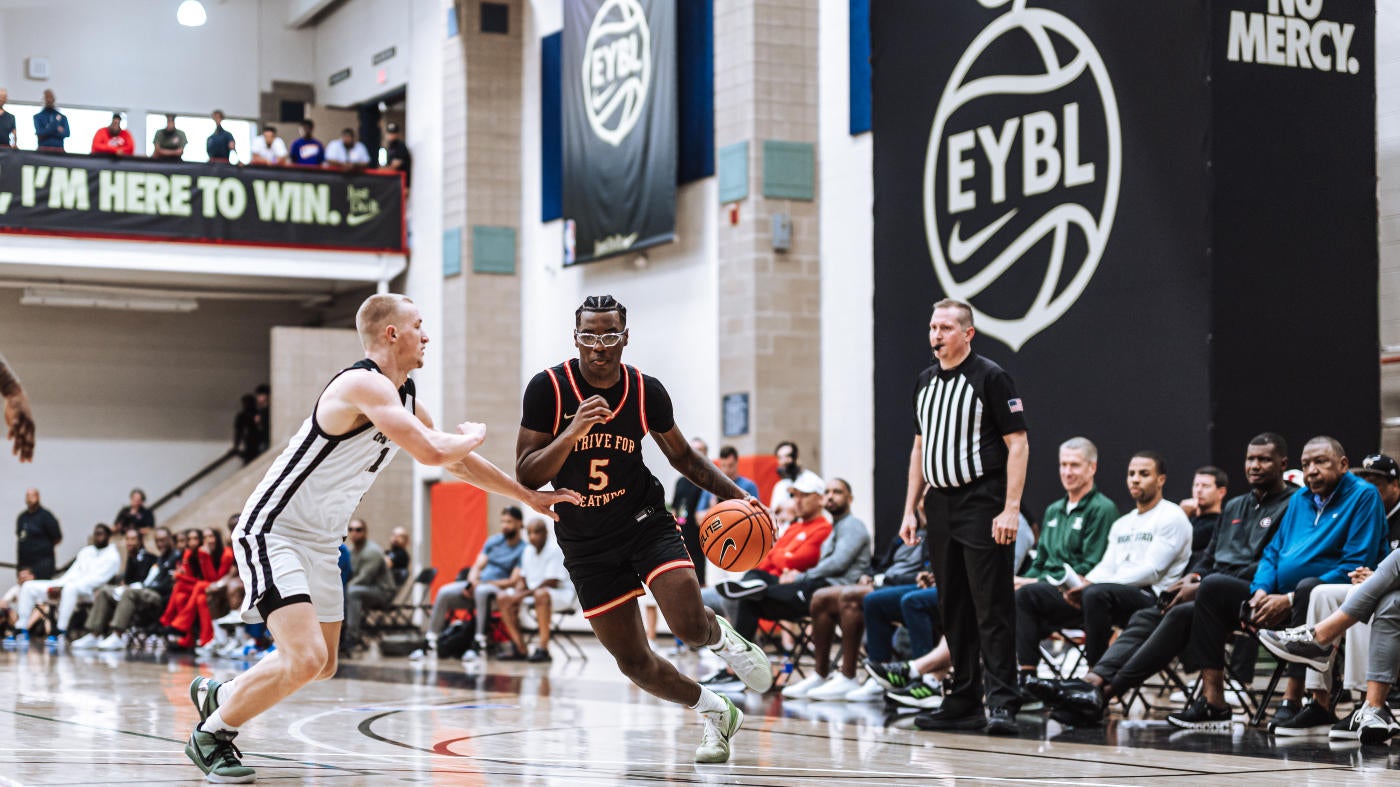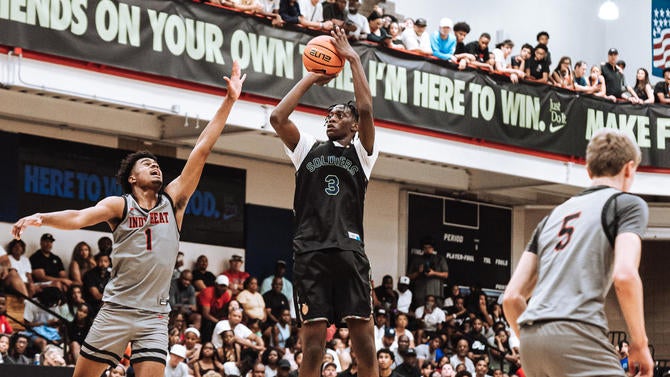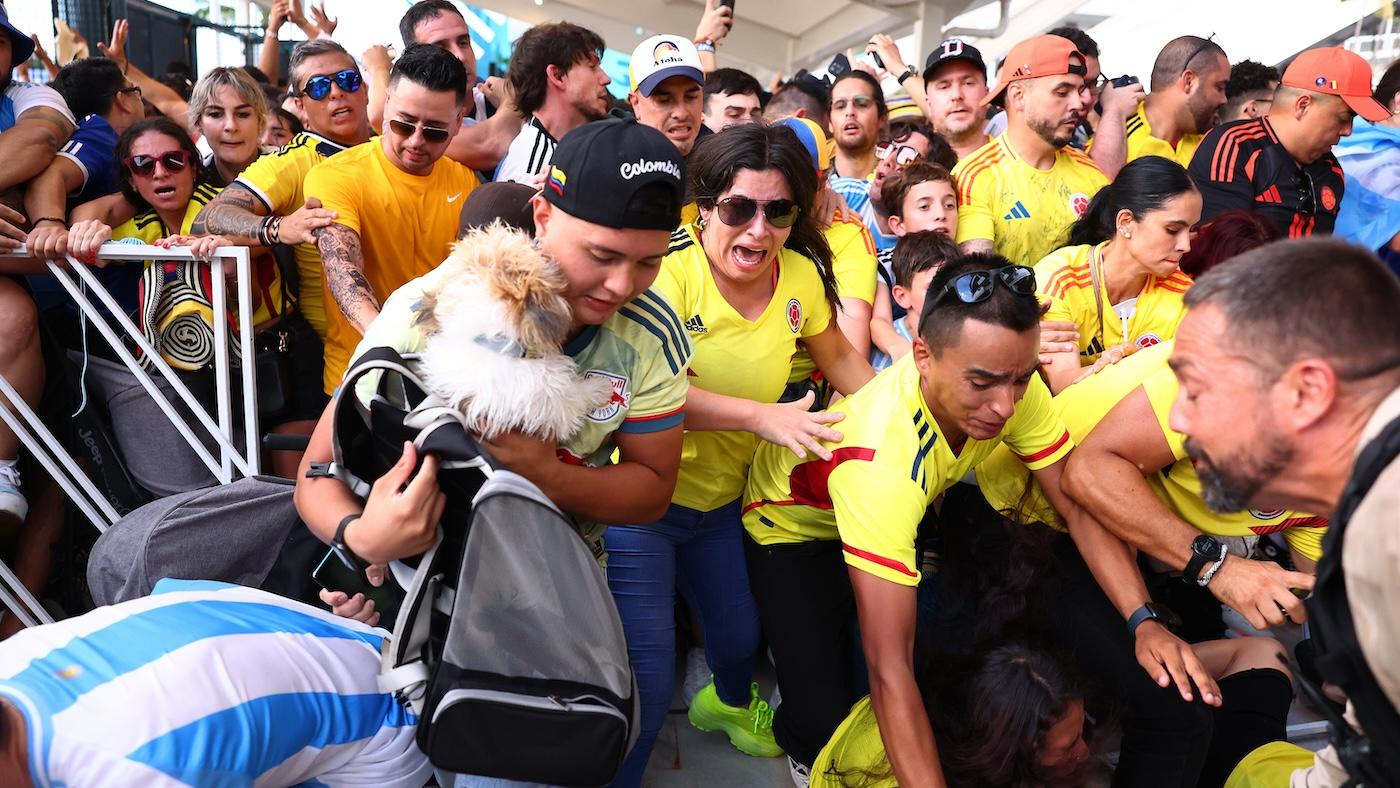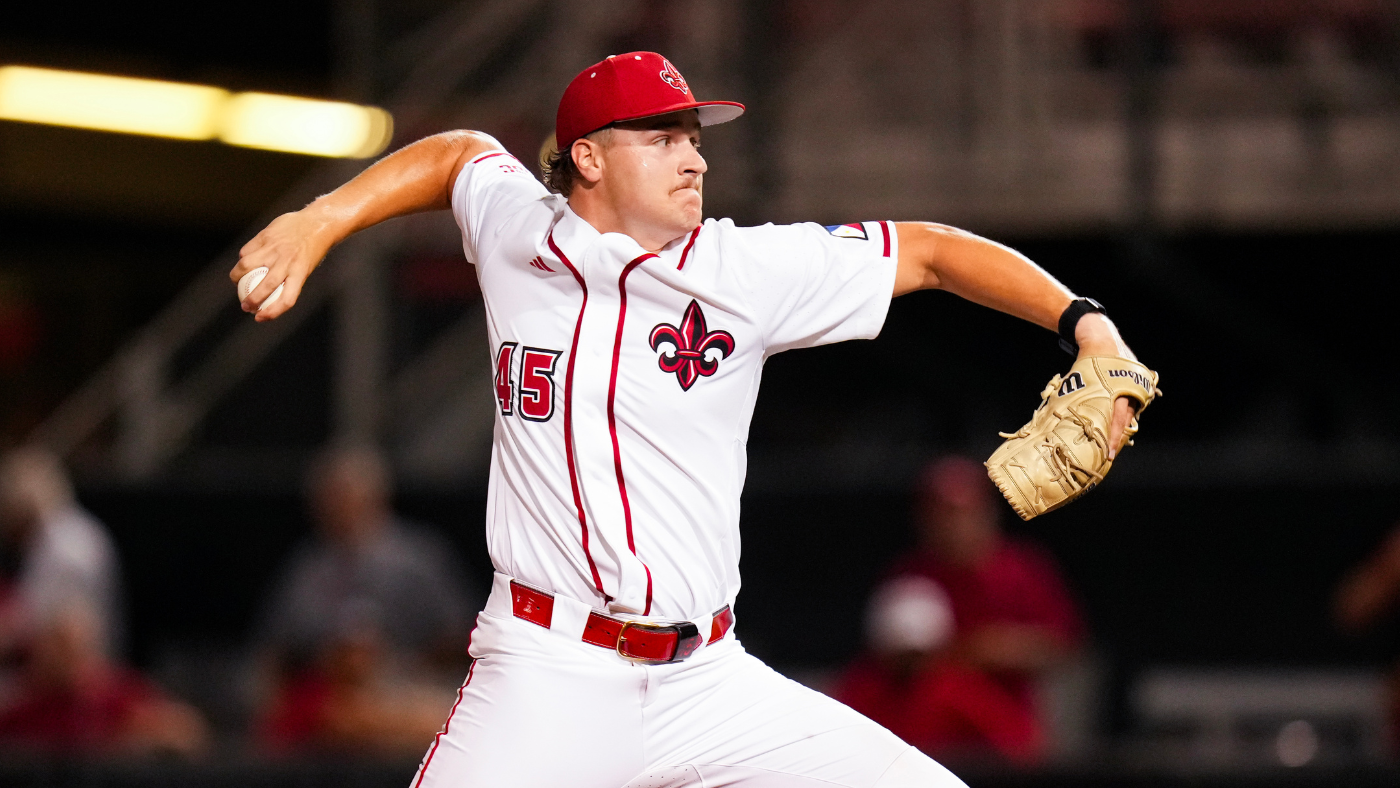NIL and relaxed transfer rules have changed recruiting at ‘the most stress-free Peach Jam in history’
Written by CBS SPORTS ALL RIGHTS RESERVED on July 15, 2024


NORTH AUGUSTA, S.C. — While waiting on a connecting flight late Thursday inside Hartsfield-Jackson Atlanta International Airport, I bumped into a college basketball coach I’ve known for years. Per airport tradition, I asked where he was headed. He said he was on his way to an Adidas event in South Carolina.
Then he asked where I was going.
“Peach Jam,” I answered.
“The most stress-free Peach Jam in history,” the coach later added, at which point we got into a conversation about how various changes to the sport have dramatically altered the way this month will unfold as many of the nation’s best high school prospects have once again descended on this quiet community just a few miles across the Savannah River from Augusta National Golf Club.
So what did the coach mean by a “stress-free” Peach Jam? To understand, you must first understand how things were before NIL deals and transfer-waivers for everybody completely flipped the sport. Back then, coaches would enter July extremely focused on a handful of high school prospects and immensely motivated to secure commitments ASAP. When they missed, after years and years of attending grassroots games and texting and calling nonstop, it often felt devastating — partly because of all of the time wasted but mostly because alternative options were limited and theoretically not as good.
But things are different now.
Oh, I’m certain some staff — perhaps Kevin Young’s new staff at BYU — would still love to secure an early commitment from AJ Dybantsa, the consensus No. 1 player in the Class of 2025. The 6-foot-9 wing is now set to attend his final year of high school in Utah. Guys like him are real difference-makers. But outside of the super-elite prep prospects who project as future one-and-done lottery picks, every high-major staff can reasonably assume that somebody three or four years older and two or three times better equipped to impact winning immediately than the majority of the high school prospects they’re watching this month will be available once the transfer portal opens after Selection Sunday.


“Unless you’re a program that’s gonna recruit all portal-kids, you’re still gonna want to sign some good high school players — but you just don’t have to sign as many anymore,” said Mississippi State coach Chris Jans. “So the pressure probably isn’t as fierce as it once was for the whole staff. Because [in this era of recruiting], if you sign one or two [high school prospects early], you’re going to feel pretty good about it.”
Kansas is an ideal place to highlight how much things have changed.
Naismith Memorial Hall of Fame coach Bill Self has been running one of the best programs in the sport for more than two decades, largely by enrolling high school prospects. He’s had a top-ranked recruit become the No. 1 pick in the NBA Draft (Andrew Wiggins), a sub-50 recruit win the Wooden Award (Frank Mason) and basically everything in between. Internal development, year over year, of players who graduated high school and immediately enrolled at KU has been a major component of the program’s success.
And it still will be, I’m certain.
But it’s hard not to notice that the Jayhawks enrolled more transfers than high school prospects last year — and then did the same thing again this year by a 5-to-2 margin. The two leading scorers at KU last season started their college careers at Texas Tech (Kevin McCullar Jr.) and Michigan (Hunter Dickinson). Barring a surprise, 60% of KU’s starting lineup next season will be transfers with AJ Storr (Wisconsin) and Rylan Griffen (Alabama) likely joining Dickinson as starters alongside Dajuan Harris and KJ Adams.
Is this the new winning recipe? As always, we’ll see. But, for what it’s worth, Kansas is No. 1 in the 2024-25 CBS Sports preseason Top 25 And 1 college basketball rankings.
Alabama is No. 2 in the Top 25 and 1 and will possibly start five players who began their college careers at different schools — specifically Auburn (Aden Holloway), Ohio (Mark Sears), Cal State Fullerton (Latrell Wrightsell) North Dakota State (Grant Nelson) and Rutgers (Clifford Omoruyi). Houston is No. 3 in the Top 25 And 1 and only enrolling two high school prospects this year, neither of whom is guaranteed to be a heavy contributor under Kelvin Sampson as a freshman.
I asked Baylor’s Scott Drew, who guided the Bears to a national championship in 2021, if he’s being more selective with high school prospects than he was earlier in his career — back before Division I players could transfer every year and play immediately.
“I think everybody is,” he answered. “Used to be, if we needed a big class, we [felt like we had to] get six high school kids. Now, no one feels that way. If we can get the right ones, we might sign three or four. But it’s not like we’re signing four early, you know?”
“It’s made it harder for every high-schooler.”
Norton Hurd IV, the coach of the Memphis-based Team Thad program that’s competing this week at Peach Jam, echoed what Jans and Drew told me and explained how quickly he’s seen things change from his perspective. Again, there will always be a high demand for the tip-top of every high school class. What Dybantsa eventually gets in NIL money will highlight as much.
“But everybody else is kind of treated like a 3-star [prospect] now … because [if a college coach doesn’t] get a high school kid, period, they’re still cool because, let’s be real, a mid-major transfer is going to be more productive [than most freshmen] in that first year [of college].”
That’s undeniably true.
Which is why most high-major coaches are now focused more on experienced transfers than inexperienced high school recruits. The byproduct of that, as Drew noted, is that it’s now harder for most high school prospects to be the centerpiece of any class, get high-major offers early or even offers at any time similar to the kind of offers comparable high school prospects received as recently as five years ago. Unless you are, say, a top-100 high school recruit, you’re unlikely to be prioritized by a top-50 program. And if you are, it’s probably only because those programs don’t want to spend too much NIL money on players unlikely to crack next season’s rotation.
“Sometimes you take [high school prospects] because they’re like rookies [in the NBA] — they’re cheaper,” said USC coach Eric Musselman. “You take them to fill out your roster.”
So high school recruits cost less than transfers?
“Unless it’s a great one,” Musselman answered.
Meantime, there was Saint Joseph’s coach Billy Lange sitting courtside at Peach Jam on Friday, evaluating prospects in a way that must feel a little weird. He doesn’t coach in the Big Ten or SEC. So, if all goes perfectly, he’ll eventually secure a commitment from a high school prospect he wants, enroll him, watch him become the Atlantic 10 Freshman of the Year — and then Lange will have to fight like crazy to keep him while high-major programs with millions more to spend swoop in.
The good news: Lange was able to retain his leading scorer, Erik Reynolds, after last season despite the 6-2 guard averaging 17.3 points while shooting 38% from 3-point range. The bad news: Generally speaking, retaining players like that — players Big Ten, SEC, Big 12 and ACC schools want — is now harder than ever for A-10 (and similar) programs than Lange just made it look, and those programs are nearly always going to be at a financial disadvantage, which is why Lange told me he spends so much time on the other stuff.
“I believe we play a high level of basketball, so I am constantly preaching and messaging that — and we have a reasonably competitive collective [for NIL],” Lange said. “[So my players] realize they can maybe make some more money at some [other] places but that it may not mean it’s better for them.”
This is the world we now live in.
It’s never been harder for low-major and mid-major programs to annually keep the players they want to keep, never been harder for second-tier and third-tier high school prospects to get offers from high-major programs, and never been harder to roster-build at the top of the sport unless you have millions and millions of dollars available to, yes, just straight-up buy established players out of the transfer portal. As one coach told me this weekend, don’t ever let a coach tell you he’s going to “recruit” transfers.
“None of us are really recruiting transfers,” the coach said. “We’re buying transfers.”
Which has made this year’s Peach Jam a little unusual in the sense that literally every day of the event in past years you would read reports about this player getting a Kentucky offer or that player getting a UCLA offer. It was offers on top of offers on top of offers. But now there’s way less of that. Because Peach Jam is no longer the place most high-major coaches come to build future teams as much as it’s the place they come to see a bunch of 17 year-olds who probably can’t help them now but just might in three or four years after a couple of productive seasons at the collegiate level leads to them entering the transfer portal.
And that’s when the bidding really starts.
The post NIL and relaxed transfer rules have changed recruiting at ‘the most stress-free Peach Jam in history’ first appeared on OKC Sports Radio.







